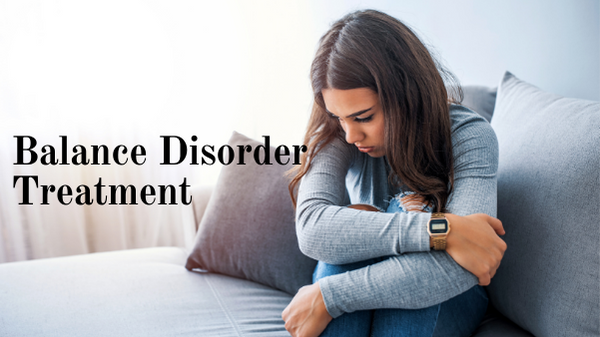An abnormal condition that makes you dizzy or uneasy is called a balance disorder. When you have this balance disorder, you will often feel like you are spinning, floating, or moving even when you are not. However, many people have this dizzy spell very often, so the term ‘dizziness’ might have a different meaning for each individual. For example, to some individuals, it might mean a brief feeling of faintness, while to some it might mean vertigo, an extreme sensation of spinning that lasts for a long time.
According to the report, about 15% of American adults, almost 33 million people suffer from this condition. A balance disorder is caused by certain medicines or health conditions, or even by the inner ear of the brain. So, when you have a balance disorder, keeping up with your daily activities becomes quite difficult. Also, it might even cause you psychological and emotional hardship. Therefore, to avoid all these problems is to find the best balance disorder treatment.
Symptoms
The following are the various symptoms of a balance disorder. They are as follows:
- Fear
- Anxiety
- Panic
- Dizziness or a spinning sensation (vertigo)
- Sudden fall or feeling as if you are about to fall
- Staggering when trying to walk
- Blurred vision
- Sudden faintness, lightheartedness, or a sensation of floating
- Nausea and vomiting
- Disorientation or confusion
- Diarrhea
- A rapid change in blood pressure and heart rate
The above-mentioned symptoms can often come and go within a short period or might even last longer. Moreover, balance disorder can also lead to fatigue or depression. So, if you experience any of these symptoms then consult a doctor as quickly as possible to get fast relief from this condition.
Causes
A balance disorder is caused by certain medicines, infection in the inner ear, and head injury. Very low blood pressure is another cause of this condition. So, when you have low blood pressure then you will often feel dizzy when you suddenly stand up. Moreover, a balance disorder can be caused by a condition that affects the visual or skeletal system. This can include eye muscle imbalance or even arthritis. As you get older, the risk of having a balance disorder increases.
Types of balance disorders
There are several types of balance disorders. But, the following are some of the most common types of balance disorders. They are as follows:
- Labyrinthitis: Labyrinthitis is an inflammation or infection developed in the inner ear that causes you loss of balance and dizziness. Labyrinthitis is often the result of an infection in the upper respiratory tract such as the flu.
- Vestibular neuronitis: If the vestibular nerve is infected by the virus then it can lead to vestibular neuronitis. This condition commonly leads to vertigo.
- MdDS (Mal de Debarquement syndrome): Traveling by sea, an ocean cruise, or running on the treadmill for a long period of time can lead to this condition. The symptoms can include continuously feeling of swaying, rocking, and bobbing. However, the symptoms usually go away within a couple of hours or days after you stop using the treadmill or reach land. But in severe cases, the symptoms can last for months or even years, and the cause will remain unidentified.
- BPPV (Benign paroxysmal positional vertigo) or positional vertigo: When the working of a cupula is in distress it can lead to a balance disorder. It prevents the cupula from flexing properly. As a result, the cupula will send incorrect information to your brain about your head position and lead to vertigo. The symptoms might include spinning when you look over or bend down to see something. BPPV can also develop from getting older or any injury to the head.
- Meniere’s disease: This type of balance disorder occurs when the fluid volume that is within the parts of the labyrinth changes. However, the exact cause remains unknown. The symptoms can include hearing loss, episodes of vertigo, feeling of fullness in the ear, and hearing of buzzing sound in the ear (tinnitus).
Diagnosis
Diagnosing a balance disorder is quite difficult. So, your primary doctor might refer you to an otolaryngologist or an audiologist to determine the type of your balance disorder. An otolaryngologist is a specialist that treats the disease related to the ear, nose, throat, and neck. While an audiologist specializes in treating conditions related to hearing and the function of the vestibular system. They will perform several examinations and tests such as blood tests, hearing tests, and others.
Treatment
When you have a balance disorder, your doctor will first prescribe several medicines to ease the symptoms. However, if your condition is beyond his expertise or experience, then the doctor will refer you to or suggest you to the best specialist in this field.
When you have BPPV type of balance disorder, your physicians will perform multiple simple examinations. One such examination is the Ripley maneuver. With the help of this examination, the catatonia is dislodged from the semicircular canal. However, the treatment session will not be the same for every individual. Some individuals may only need one session to relieve the dizziness while some individuals might need multiple sessions to cure or relieve the dizziness.
